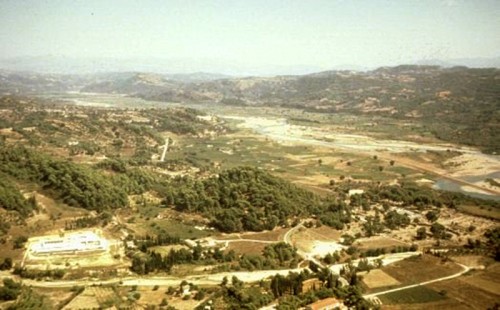Justin Matherly – Would that You were the last of the filth which You had to remove / why does your flesh shit?
1 October – 20 November

Opening reception: Friday, 1 October, from 6:00pm – 11:00pm
Marginal Utility is proud to present ‘Would that You were the last of the filth which You had to remove / why does your flesh shit?’, an exhibition by the Brooklyn based artist Justin Matherly.
The starting point for this project is the Belvedere Torso, from the 1st _ 2nd c. BC, and attributed to Apollonios of Athens, the son of Nestor. The Torso is thought to be Hercules resting after completing the twelve labours, and sitting while in deep meditation. What is left of the marble torso is an abused and mutilated artifact that is deprived of its arms, legs and head. Matherly finds this violently defaced image of Hercules eternally trapped in thought to be intriguing, for how can one think without a head?
Johann Joachim Winckelmann, a German Art Historian (December 9, 1717 – June 8, 1768) sees the contours of the torso to be ever changing, articulating a perilous form of the verge of appearance. For Winckelmann the folds and gaps on the back of the Torso indicate Hercules” inward dialogue that occurs within the mind without uttered sounds. Matherly is interested in the implication that here thought is directly inscribed on the body of the Torso. For the artist who attempts to copy the Torso, there can be no sense of accuracy “as the undulation whose direction she thinks to trace will diverge imperceptibly and cause the eye and hand to err by taking a new path”. Matherly's project takes this statement literally, which is not to copy slavishly but to approach the sculpture analytically, unmasking the problem of its formal mechanism in order to force something altogether other from this paragon of Greek beauty.
In Matherly's treatment, the Torso is less a figure of repose or mediation as one of convalescence. In its crippled condition, the sculpture serves as a rumination on the capacity of art (pure semblance) to heal, to nurse the sick back to health. However, convalescence should be understood in the Nietzschean sense in which health is not viewed in opposition to sickness, but as an affirmation of it. As Nietzsche writes, sickness “likewise gave me a right to a complete reversal of my habits; it permitted, it commanded forgetting; it bestowed on me the compulsion to lie still, to be idle, to wait and be patient…But to do that means to think!” The Torso in its crippled condition provides -through the process of its formal decomposition- a space for thought.
The notion of convalescence is reinforced by Matherly's treatment of materials. He often uses various prostheses (tree gators, walkers, crutches, et cetera) that serve to support or shape the material heft of cement. The prostheses, designed either to aid or control the motion of ailing or growing bodies, attempt to restore movement to the inert and static concrete. The sculpture thus flirts with catastrophe, with its own destruction: the materiality of the Torso threatens to destroy the very apparatus that serves as its support. Its existence appears contingent.
Matherly's process too embraces the element of contingency. The “pure lines of mutation” that appear on the surface of the sculpture are unpredictable and can only be seen once the sculpture has been freed from its mold. Only after completion of the casting process can one see what has happened, what sort of contour or surface has been created through the criss-crossing of the “pure little lines of mutation”. It is within these tangled lines which compose the contour of the Torso's surface that Matherly sees the possibility of changing the cartography of the perceptible, the thinkable and the feasible.
This exhibition was made possible in part by a grant from The Foundation For Contemporary Arts.
ABOUT THE ARTIST
Justin Matherly's practice centers around the desire to make physical the abstract through excessively literal representations. Drawing on the writings of the Marquis de Sade for the author's tenuous relationship between transgression and emancipation, Matherly creates structures that convey an impression of force and weight with an underlying fragility. Matherly's sculpture literally blocks the viewer while clinging onto a thread of legibility that generates a space for interpretation and enquiry. To paraphrase Vertov's writing about kino-eye, Matherly attempts to make “the visible invisible, the clear unclear, the manifest hidden, the overt disguised [thus] making truth into falsehood.”
Matherly's work has been exhibited at EFA Gallery, Gavin Brown's Enterprise, Jack Shainman Gallery, Dispatch (all New York), Liste09, Basel, CH; Jorg Grimm Gallery, Amsterdam, NL; Artissima 15 in Turin, IT. Matherly holds a Certificate in Painting from the Pennsylvania Academy of Fine Arts, a B.F.A. from the University of Pennsylvania, and an M.F.A. from Hunter College. Justin Matherly is represented by Bureau, New York.
Justin Matherly-at Marginal Utility-Art In America-review-Jan-2011